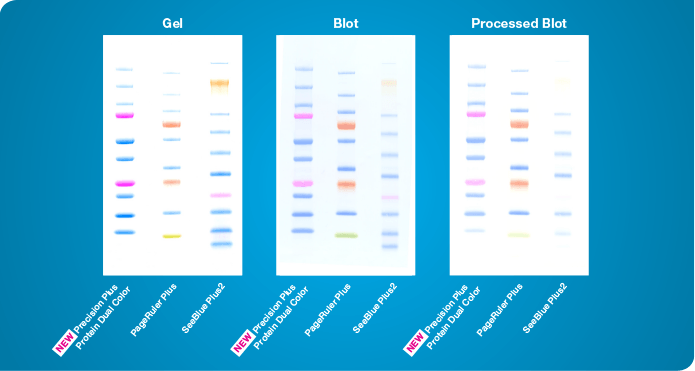
Bio-Rad’s new and improved Precision Plus Protein Dual Color Standard provides increased overall brightness, offering visual robustness through the entire protein electrophoresis and western blotting workflow – even during rigorous stripping and re-probing protocols — making it a more effective tool for monitoring separation and estimating protein molecular weights.
Two key benefits of the new Precision Plus Protein Dual Color Standards are:
- Increased brightness — provides better identification of target proteins on gels and blots as well as easier monitoring of gel electrophoresis and confirmation of transfer quality
- Stronger marker persistence — remains on the blot even under the most rigorous conditions, boosting confidence in western blots and facilitating accurate molecular weight estimation
In a head-to-head comparison, Dual Color is brighter than the other protein markers on gels, blots, and processed blots!

Ordering Information
| Catalog # | Description |
| 161-0374S | Precision Plus Protein Dual Color Standard Trial Size, 50 μl |
| 161-0374 | Precision Plus Protein Dual Color Standard Single Vial, 500 μl |
| 161-0394 | Precision Plus Protein Dual Color Standard Value Pack, 5 x 500 μl |
Legal Notice
Precision Plus Protein standards are sold under license from Life Technologies Corporation, Carlsbad, CA for use only by the buyer of the product. The buyer is not authorized to sell or resell this product or its components.

